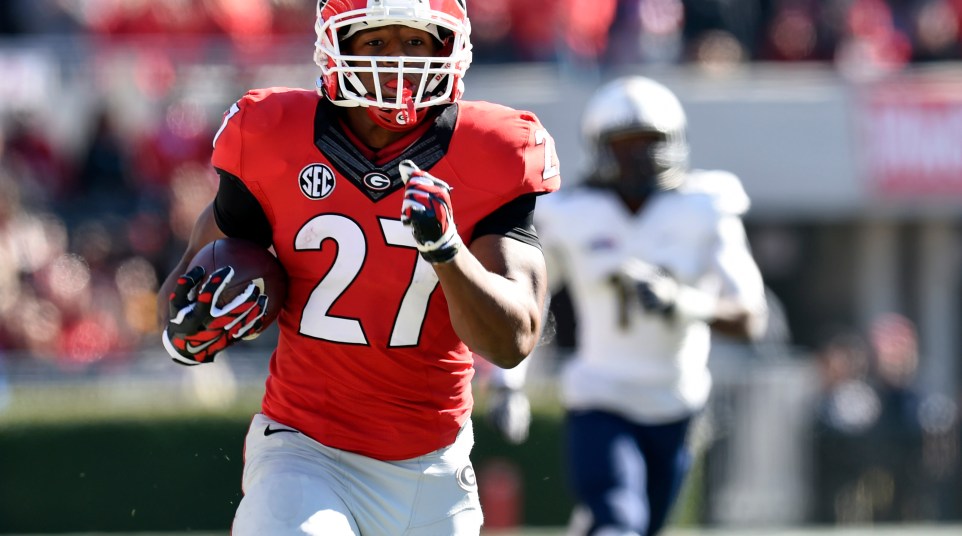
2014 recruiting class: How many are still in the SEC?
Heading into its fourth year on SEC campuses, the class of 2014 is the largest experienced group of players we’ll be watching this fall on Saturdays. There will certainly be some fifth-year seniors from the class of 2013 still in action, but with many players graduating as true seniors this fall or having left for the NFL, fifth-year players aren’t very common.
By year four, recruiting classes are rarely intact. If a 5-star signee lives up to his billing, he’s likely skipping his senior season to enter the NFL Draft. Plenty of 4-star recruits and 3-star sleepers end up leaving early as well.
On the other side of things, there are players of all star ratings who are unhappy about sitting on the bench. By year four, many members of the original signing class have transferred elsewhere in hopes of finding an opportunity to see the field. Unfortunately, there are also players whose careers are cut short by injuries and off-the-field issues. Junior college transfers only get the partial SEC experience, having used some of their maximum four years of eligibility.
According to 247Sports’ recruiting database, 344 members of the class of 2014 enrolled at SEC schools. Of those 344, the same database shows 221 (64 percent) of those enrollees as still on active rosters at the same school.
In terms of retention, Vanderbilt leads the way, holding onto 22 of its 23 enrollees. It might not be all that great of news for coach Derek Mason, as the class was ranked No. 46 nationally and No. 14 in the SEC, but with 95.7 percent retention, he and his staff have had the chance to develop a veteran core, which should help this fall.
On the other end of the spectrum are Tennessee and Texas A&M. UT coach Butch Jones got 32 signees on campus in 2014, and a whopping 12 have transferred when one includes RB Jalen Hurd. Add in DE Derek Barnett and WR Josh Malone’s departures for the NFL along with a couple JUCO transfers graduating, and that leaves only 17-of-32 (46.9 percent) of those enrollees on the roster for 2017.
Aggies coach Kevin Sumlin, on the other hand, signed a much smaller class of only 21, but is similarly left with less than half (47.6 percent) of those enrollees for 2017. Texas A&M is losing DE Myles Garrett and WR Speedy Noil to early NFL entry, and there have also been three transfers, five graduations and one retirement due to injury.
From a percentage perspective, Tennessee and Texas A&M were actually hit harder than the schools which have gone through a coaching chance since National Signing Day 2014: Florida (50 percent), Georgia (65 percent), LSU (52 percent), Missouri (60.7 percent) and South Carolina (66.6 percent).
The case of Florida particularly stands out. In his final recruiting class, Will Muschamp signed 24 players for a haul which was No. 9 nationally. The players with the seven highest 247Sports Composite scores from that class will all be playing somewhere other than Gainesville in 2017. Two (CB Teez Tabor and OT David Sharpe) are early entrants, while the other five are off the team due to either transferring (DT Gerald Willis, QB Will Grier, QB Treon Harris), injury (DT Thomas Holley) or disciplinary (CB J.C. Jackson).
Georgia finds itself in quite the opposite situation with its 5-star trio of RB Nick Chubb, RB Sony Michel and LB Lorenzo Carter all returning for their senior season in Athens. With that in mind, many media members are already taking UGA as the favorite in the SEC East next fall.
Aside from Florida, LSU, Tennessee, Texas A&M and Vanderbilt, the majority of teams were near the range of 60-80 percent of enrollees remaining on roster: Alabama (75 percent), Arkansas (76.9), Auburn (59.2), Georgia (65), Kentucky (62.5), Mississippi State (80), Missouri (60.7), Ole Miss (65.4) and South Carolina (66.6).
When one considers that Alabama has had the No. 1 recruiting class six years in a row (2011-16), being able to retain 75 percent of those signees by year four is especially impressive. For Nick Saban to be able to pitch the opportunity to go the NFL after three years – the case for 2014 signees OT Cam Robinson and CB Marlon Humphrey – and also be able to develop 75 percent of the class into four-year veterans of the program, it’s easy to see why Alabama has been the SEC’s most dominant program.
